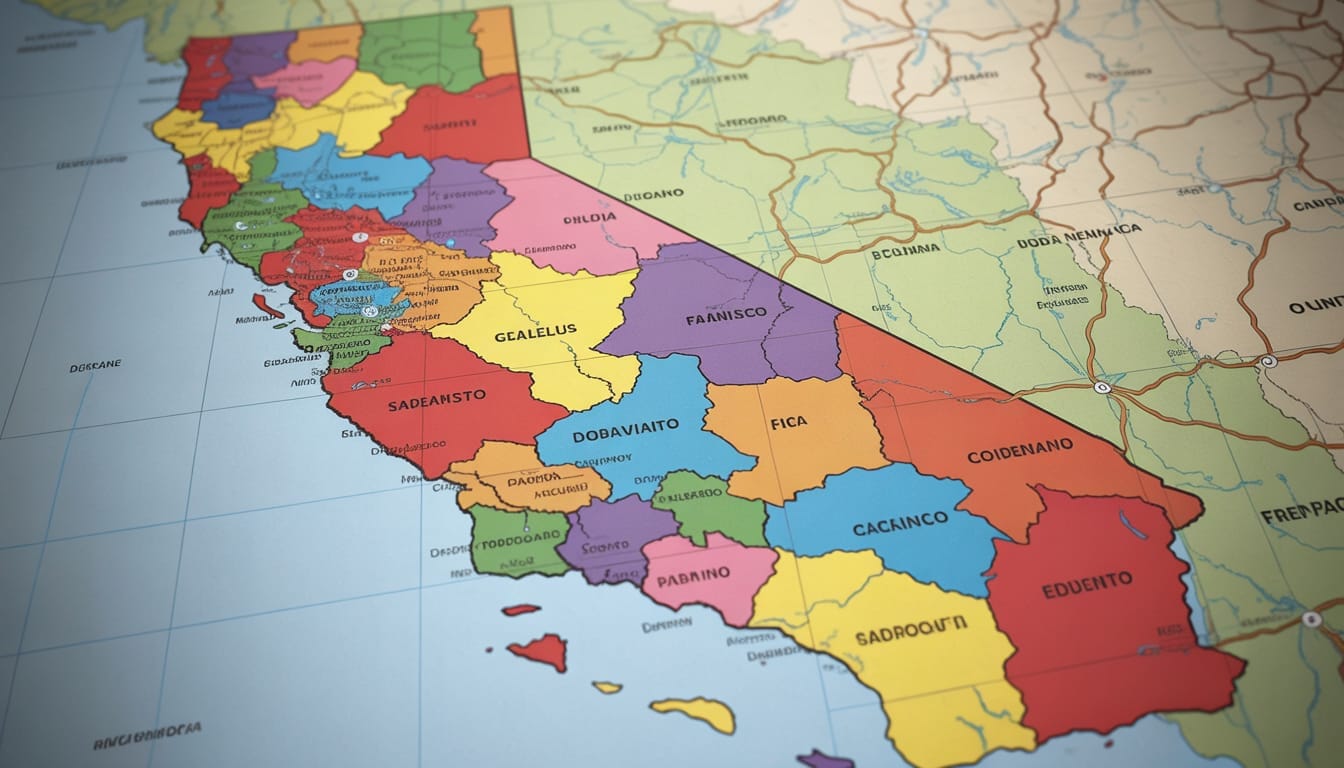California is taking bold action in the ongoing national feud over congressional control, unveiling a partisan California redistricting plan to redraw Democratic-leaning districts and directly challenge recent Republican efforts in Texas. The strategy, announced by Governor Gavin Newsom, aims to reshape the political map ahead of the 2026 midterms, with the primary goal of securing five additional Democratic seats in the U.S. House—matching Republican ambitions in Texas.
Governor Newsom, standing before a coalition of state lawmakers in Los Angeles, declared a statewide special election for November 4 to let voters approve new congressional maps designed to bolster Democratic representation. This move comes as a direct response to Texas Republicans—backed by President Trump and Governor Greg Abbott—who are pushing a mid-decade map overhaul that could tip up to five seats in their favor. Newsom’s plan mirrors Texas’s controversial redistricting scheme, openly framed as a “meet fire with fire” political counter-strike.
The Fight Over Congressional Control Intensifies
California currently boasts 52 U.S. House seats, of which Democrats control 43 and Republicans hold 9. In Texas, Republicans lead with 25 out of 38 seats, and their proposed redistricting could boost GOP dominance further. The implications for national governance are massive, as the Republican advantage in the House stands at just seven seats, making every new district crucial in shaping legislative outcomes through 2030.
Traditionally, California redraws its districts via an independent citizens commission after the Census, to curtail gerrymandering and partisan meddling. Under Newsom’s initiative, the legislature would temporarily reclaim that authority—if Texas or any other state passes partisan redistricting measures first. “We cannot stand back and watch democracy disappear district by district,” Newsom said, echoing calls for Democrats nationwide to refuse “unilateral disarmament” in the redistricting wars.
What’s at Stake for California Voters?
If enacted, California’s new maps could reduce Republican districts from nine to just four and give Democrats a chance to hold more than 90% of the state’s congressional delegation—despite Trump winning nearly 40% of the California vote in 2024. The California redistricting plan marks a break from precedent, raising both hopes and alarms about fair representation.
To advance, Newsom’s proposal needs a two-thirds majority in both state legislative chambers and voter approval in the November election. Many Californians remain wary: polling indicates only 36% support returning redistricting powers to lawmakers, preferring to retain the commission system for transparency and impartiality.
Political Tensions and National Fallout
The back-and-forth between California Democrats and Texas Republicans is fueling wider calls for federal oversight to prevent mid-decade partisan map changes. Newsom argues that Republican-led pushes—especially in Texas—risk entrenching minority rule and disenfranchising voters through tactical gerrymandering. Yet critics say California’s answer is itself a form of political manipulation.
This fierce partisan contest extends beyond state borders, symbolizing a broader tug-of-war for control over the direction of American democracy. With states like Missouri, Indiana, New York, and Illinois also considering mid-decade redistricting, the battle lines are drawn not just for the House majority, but for the future of fair representation nationwide. Read more at BBC News.
What Happens Next?
California’s proposed maps are expected to be released on Friday, followed by swift legislative action. If adopted, they would remain in use until the next Census in 2030—only reverting to the independent commission’s process after that point, once this national redistricting fight has subsided.
As the redistricting standoff escalates, California Democrats have made the upcoming election about more than just lines on a map. They argue it’s a referendum on Trump-era policies and the preservation of democratic norms, urging voters to reject what they describe as “rigged” Republican maneuvers in Texas.
Sources
















